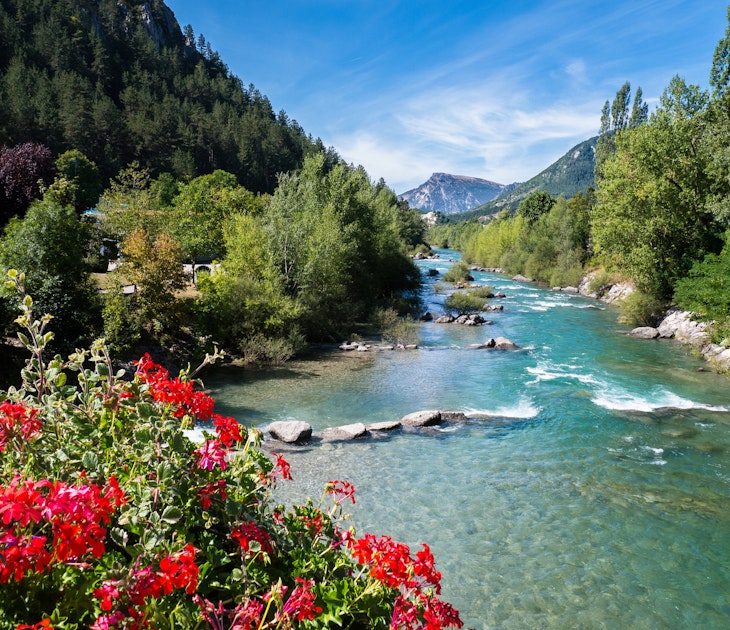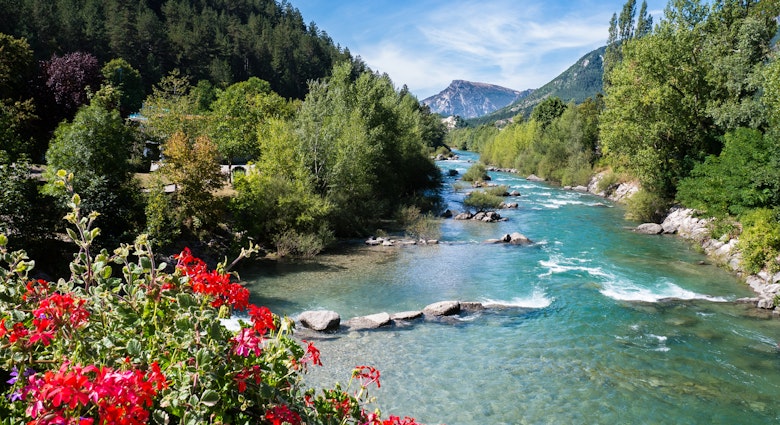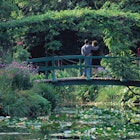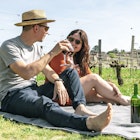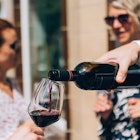For city-dwellers, ‘getting back to nature’ is a well-worn cliché. When hyper-connected, fast-paced living gets too much, we hurl down our MacBooks and demand time out. And after a week or two of wilderness hikes, camping in deserts or howling at the moon, we shuffle obediently back into our lives. The ‘natural experience’ box is ticked, then forgotten.
So it’s with a small measure of cynicism that I find myself kneeling among cowpats, foraging for lunch. The idea of sourcing fresh food and reconnecting with nature is irresistible; but can it leave a lasting mark on a Londoner like me, for whom ‘wild food’ means the discount aisle of a supermarket?

One thing it’s impossible to be cynical about is my location. The sleepy, rustic France of travel fantasies often eludes visitors. Provence and the Côte d'Azur’s achingly lovely towns are well trodden and most of France’s travel secrets well and truly out. But the Auvergne is the real deal: less explored by foreign visitors, retaining a rough charisma and bucolic feel. Pealing bell towers, cobblestoned streets and hilltop walled towns are everywhere, with miles of meadowland in between. Outside the towns, where silhouettes of the dormant Chaîne des Puys volcanoes roll into the distance, all is still except the purr of tractors and wind stirring the branches of beech trees.
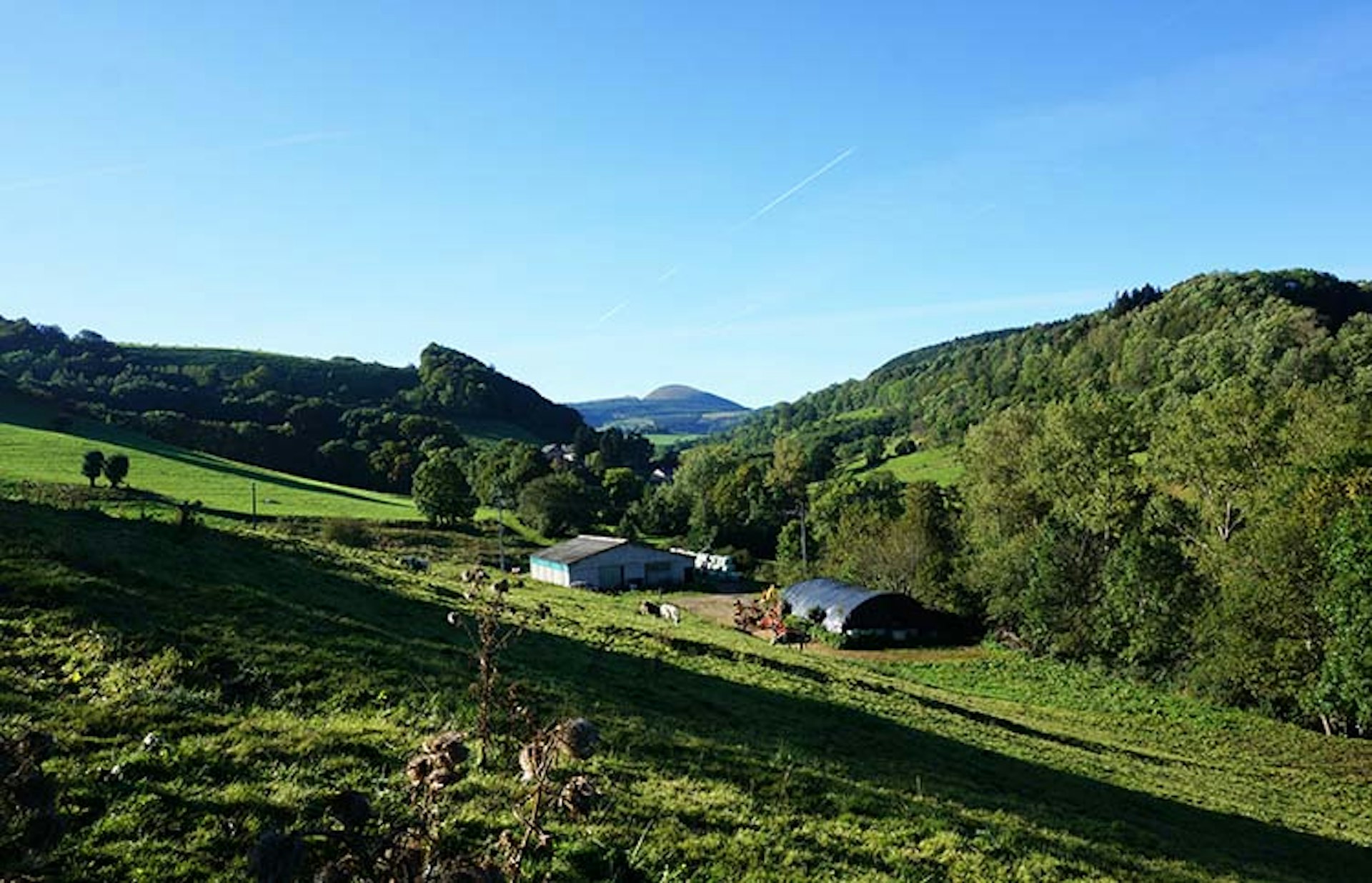
I’m hiking out from the village of Orcival into the Auvergne countryside, in search of France’s edible plants. Orcival is a peaceful place, though its name gives away a wild heritage (it comes from vallée de l’ours, ‘bear valley’). Its Romanesque centrepiece, the Notre-Dame d’Orcival basilica, seizes attention each year when pilgrims arrive to venerate its statue of the Virgin Mary. At other times Orcival snoozes on, ushering hikers and skiers into guesthouses for famous Auvergne hospitality and food. But there’ll be no steaming plateful of Auvergne’s mountain cuisine for me today. Accompanied by a hiking guide and edible plant expert, I’ll be gathering leaves, fruit and flowers in the hope of rustling up lunch.

“Generation after generation, we lose this wisdom and our connection to nature,” says Christophe Anglade (aluna-voyages.com), my guide for the day. And indeed, foraging is second-nature to my grandparents, familiar to my (mushroom-gathering, jam-making) parents, but far out of my comfort zone. Christophe, a hiking guide for more than 15 years, is passionate about a return to these millennia-old skills. He knows the Auvergne intimately and co-authored a book about its flora, Plantes comestibles [Edible Plants]; just the expert I need to introduce the region's roots, nuts and nibblable blooms.
Encyclopedic knowledge is essential. The gleam of a purple berry among the leaves could be a succulent myrtille (bilberry), or the poisonous Parisette à quatre feuilles (True Lover’s Knot). “It’s very important to go with someone who really knows!” emphasises Christophe. Playing fast and loose with the Auvergne’s wild plants could land you much worse than an upset stomach; some are fatal even in small quantities.
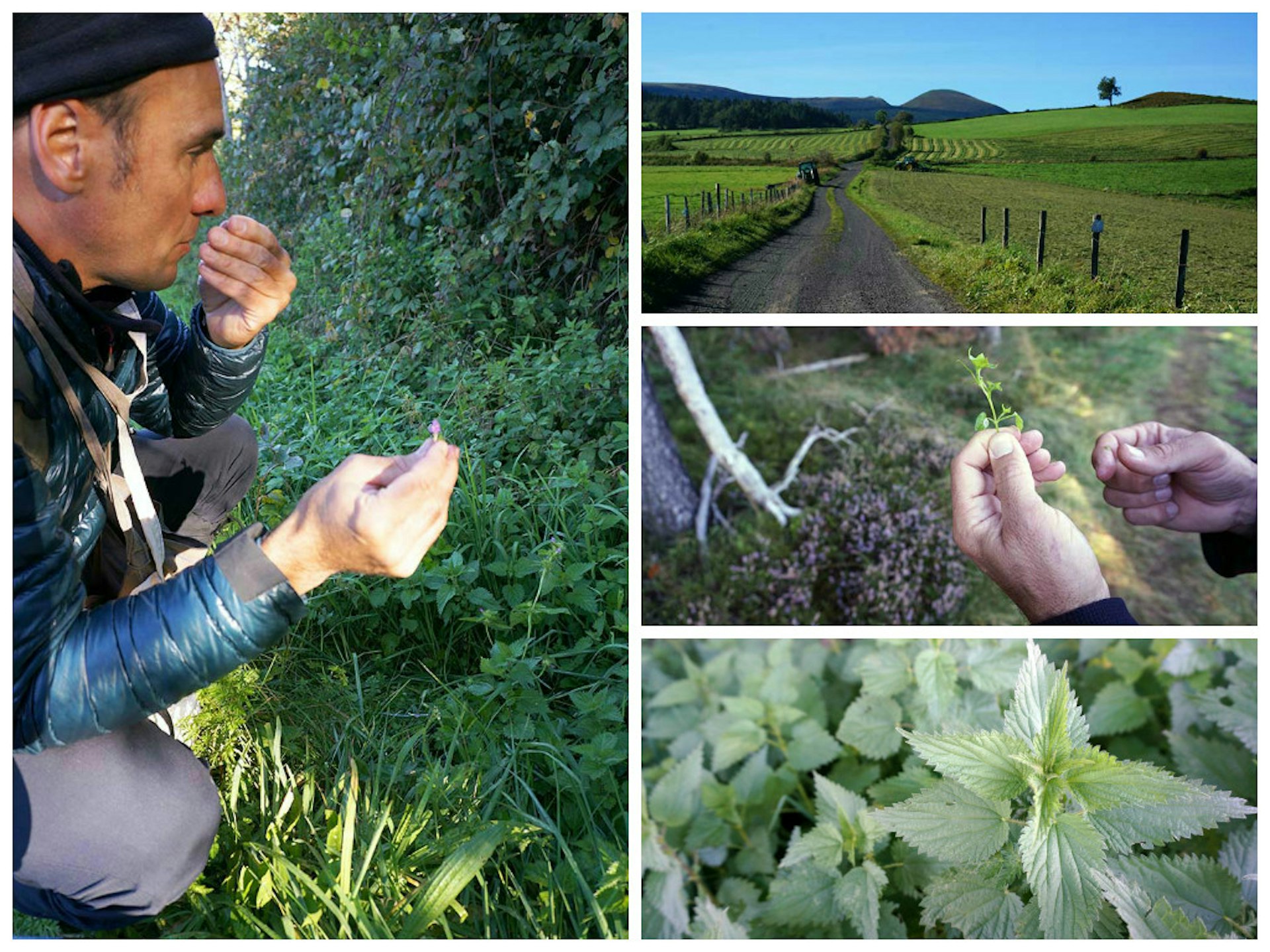
Winnowing my fingers through the long grass, or bending back branches to reveal mushrooms, is calming and centering. Though sobered by the thought of picking the wrong thing, Christophe’s guidance is reassuring. My eye is soon able to pick out harmless plants. There’s pink-petalled compagnon rouge (red campion) used in soaps and shampoos, dandelions ripe for bottling into jellies, and dark bilberries renowned for boosting eyesight (eaten by wartime RAF pilots to improve their night vision). The act of looking for edible plants sharpens the senses and I’m surprised by how intuitive it feels. “We have a kind of ancient memory,” says Christophe. And finding the freshest stuff is easy with a few rules: “Like plants, when we’re young, we’re straight; and when we’re old, we’re bent,” advises Christophe.

There's a great range of flavours in the French hills, from the sharp pineapple scent of wild chamomile to mushrooms and mint. “It’s not enough to use your vision, you have to use all your senses,” Christophe urges, rolling a sorrel stem between his fingertips. “Look, smell and then you know it’s the plant you want.” Our cloth bags are starting to bulge with salad ingredients (mine at a much slower pace), and by now our fingers are stained with blackberry.
While the French are famously engaged with what they eat, food foraging has long been out of vogue. Nonetheless, it’s regaining popularity among gourmets disillusioned with the wilted produce they find in supermarkets. Like me, they are discovering that a rummage at nature's table doesn’t feel as alien as expected.
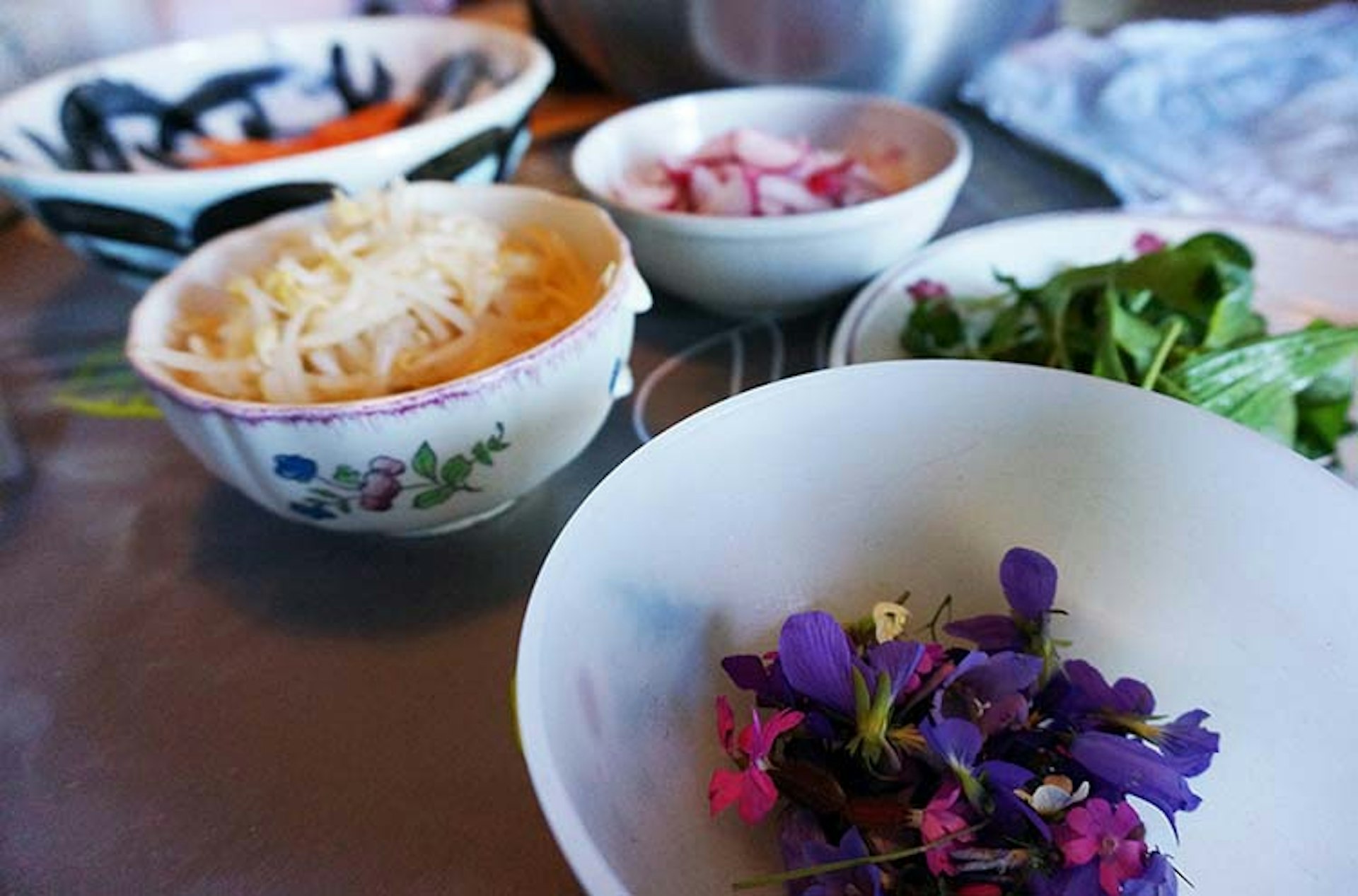
Back at Christophe’s house his partner at Aluna Voyages, Isabelle Montbessoux, is waiting. Like Christophe, Isabelle is a Nordic walking expert and mountain guide who knows the Auvergne and its produce keenly – and she helps us whip up a feast from what we’ve brought back. Recipes range from infused liqueurs and herb butters to nettle quiches and hazelnut cakes. Any ingredients they can’t find or grow, they buy locally: goat milk yoghurt, organic flours and fresh eggs.
There’s no risk of going hungry. Christophe and Isabelle deftly wrap our foraged sorrel into spring rolls, along with carrots and sprouts, with splashes of colour from purple campanula flowers and wild pansy. The nettles we plucked are destined for oat and buckwheat galettes, griddled flat cakes. The blackberries will top a whirl of yoghurt and hazelnut shavings. Elderflower-infused wine waits on the table. With our food set by the seasons, the resulting feast is a snapshot of the Auvergne here and now.

Foraging is not a skill easily transferable back to life in a city, but it has a lingering impact. Spending time inspecting a plant's distinctive leaf pattern, or the giveaway scent of a bud, lifts your senses towards keener awareness. Dare I say the experience connected me back to nature? Knowledge of leaf shapes and medicinal herbs might fade quickly, but the Auvergne’s idyllic beauty stays sharp in the memory.
Follow Anita on Twitter @lunarsynthesis and read about her research trip to the Auvergne on Storify.
Anita travelled to the Auvergne with support from Auvergne Tourisme (auvergne-tourisme.info) and Aluna Voyages (aluna-voyages.com). Lonely Planet contributors do not accept freebies in exchange for positive coverage.


